In the mid 1950s, prisoners at the Iowa State Penitentiary in Fort Madison were visited by photographers. The prison, established in 1839, seven years before Iowa became a state, was the scene for federal executions until 1965, when Iowa abolished capital punishment. In all 46 men had been executed by hanging.
These pictures take us behind the scenes. But, of course, what we see is what the authorities permitted.
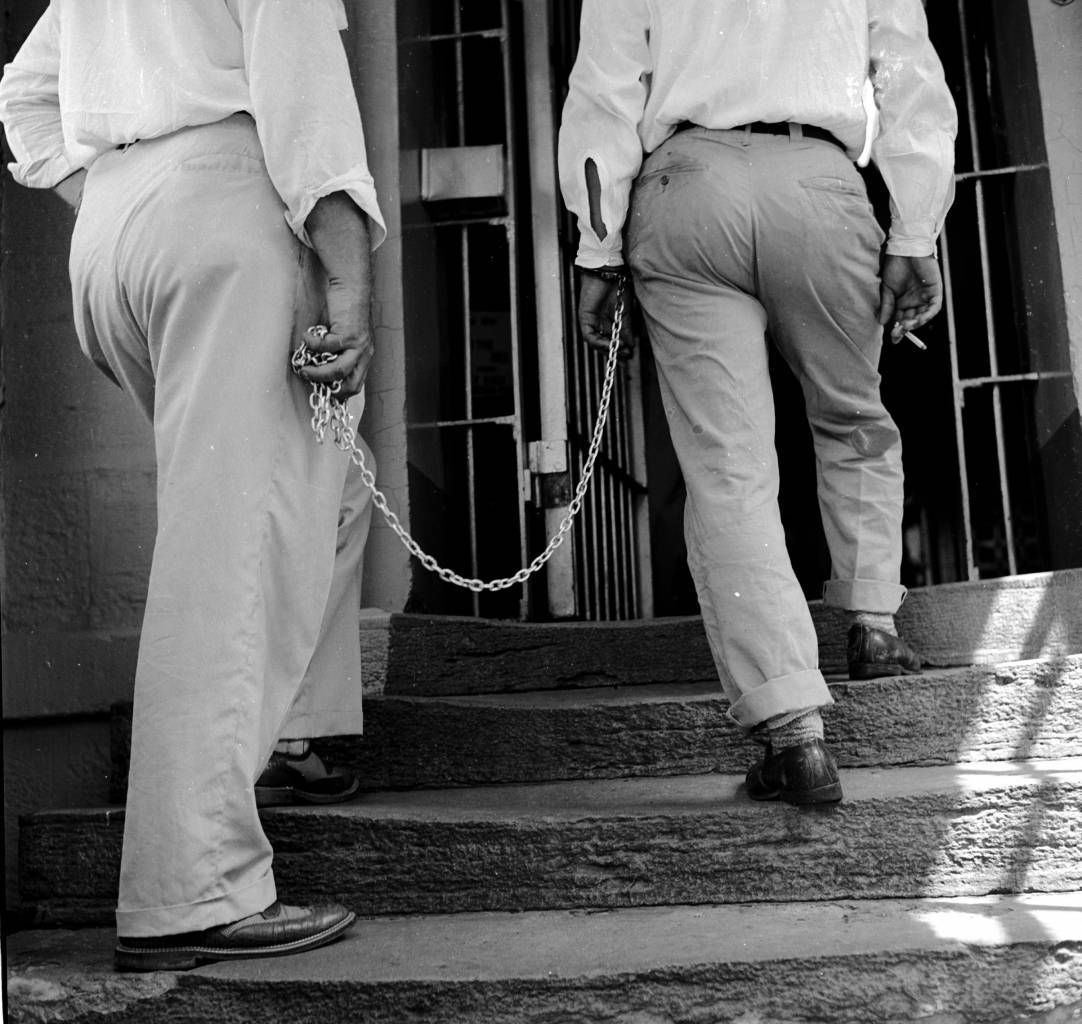
A new prisoner being led up the steps into the Iowa State Penitentiary in Fort Madison. (Photo by Evans/Three Lions/Getty Images)
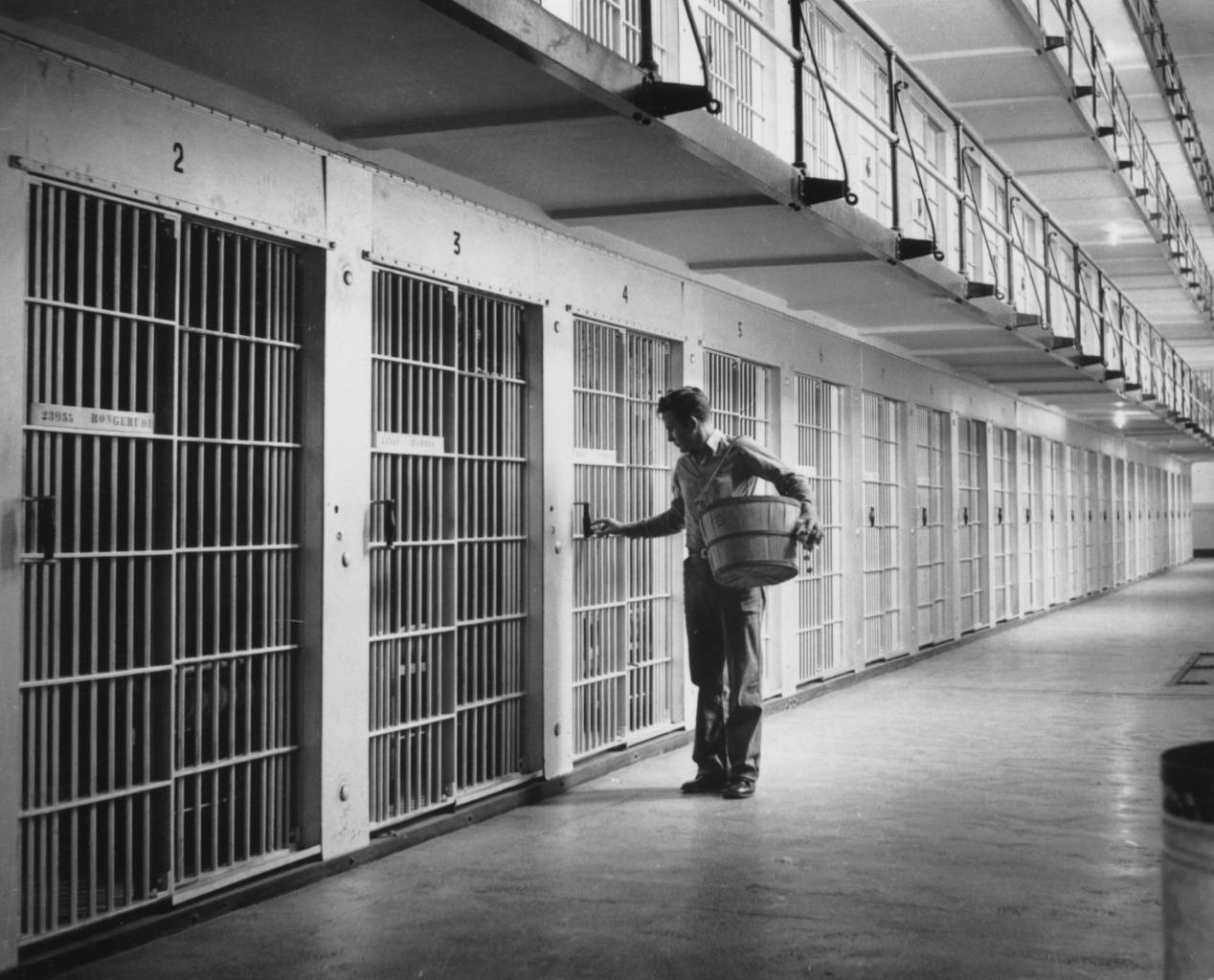
circa 1955: A prison warder delivering the weekly issue of matches to cells inside one of Iowa’s four prison cell houses, islands of steel and concrete set in huge buildings with walls up to 8ft thick. (Photo by Three Lions/Getty Images)

circa 1955: Warren Jack Nutter, sentenced to hang for murdering an Iowa policeman, reading a letter from his mother in his cell in the Iowa State Penitentiary at Fort Madison. (Photo by Evans/Three Lions/Getty Images)
In 1956, 18-year-old Warren Jack Nutter (seen above) spoke to the Daily Iowan from his cell at Ford Madison. He recalled the crime that had ruined his life and ended that of another man.
On January 4 1956 Warren and four friends (three men and two women) had decided, on a whim, to head to California. To finance the trip the pals burglarised a gas station. Speeding away, a policeman pulled them over. In the police station for questioning, Warren asked to use the toilet. There he espied an open window. He went through it and dashed to the car. He recalled:
“I remember I didn’t want to leave the others, especially Bette, back there in the police station. I had a shotgun in the car, and then it was in my hands and I was going back into the station. I pointed the gun at the officer…. And the next thing there he was stretched out on the floor and the room was roaring with a gunshot and I was running. I ran and ran. It was like a bad dream – your legs won’t move fast enough and you can’t get away from the thing chasing you. It didn’t take them long to catch me…”
He was taken back to the police station. There Nutter was told he had killed officer Harold Pearce. Why had he done it? Said Warren:
“I wasn’t mad at him… I just… I don’t know why.”
On February 10 1956, Warren Nutter pleaded guilty to murder. But had he been tricked?
“They appointed me a lawyer. He came up to my cell and told me he’d made a deal with the prosecution to get me life sentence. All I had to do was plead guilty. Well, I knew I was guilty, so I went along – and here I am on Death Row. You explain it. I can’t.”
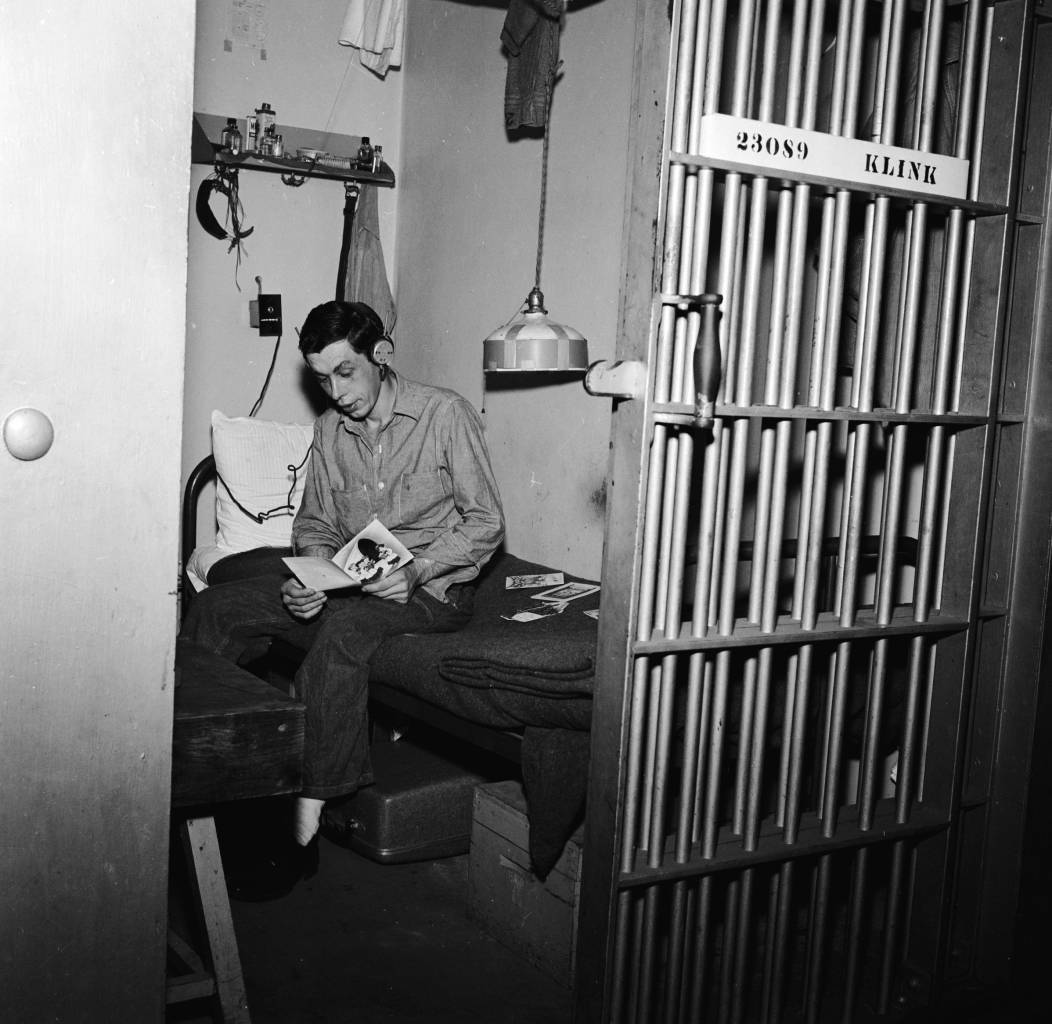
circa 1955: A prisoner at the Iowa State Penitentiary in Fort Madison reading his Christmas cards in his cell. (Photo by Vandermyn/Three Lions/Getty Images)
We quote from the records, on a hearing which took place in open court on February 7, 1956:
The Court: ‘* * *. Mr. Nutter, prior to the time you changed your plea from not guilty to guilty on February 3, 1956, had you been fully advised by your attorney of your legal rights?’
Warren John Nutter, Jr.: ‘Yes.’
The Court: ‘Mr. Nutter, after receiving such advice did you determine or make up your own mind, yourself, to make such change in your plea?’
Mr. Nutter: ‘Yes, sir * * *.’
The Court: ‘* * * Mr. Nutter, did you then and do you now understand that by your plea of guilty you were pleading guilty to the charge that you did on or about January 5, 1956, * * * murder Harold Pearce?’
Mr. Nutter: ‘Yes, sir.’
The Court: ‘Mr. Nutter, did you then and do you now understand that you would not be entitled to have a jury * * * pass upon the charge made against you if you plead guilty?’
Mr. Nutter: ‘Yes, sir.’
The Court: ‘Mr. Nutter, did you then and do you now understand that by your plea of guilty you make and claim no defense to your act in killing Harold Pearce?’
Mr. Nutter: ‘Yes, sir.’
The Court: ‘Mr. Nutter, did you then and do you now understand that upon your pleading of guilty the court would hear the evidence before determining the degree of your crime and the punishment to be meted out therefor?’
Mr. Nutter: ‘Yes, sir.’
For one year – a mandatory term on a death sentence – Warren Jack Nutter lived in Cell 4, Death Row.
He waited for the Judges to review his appeal.
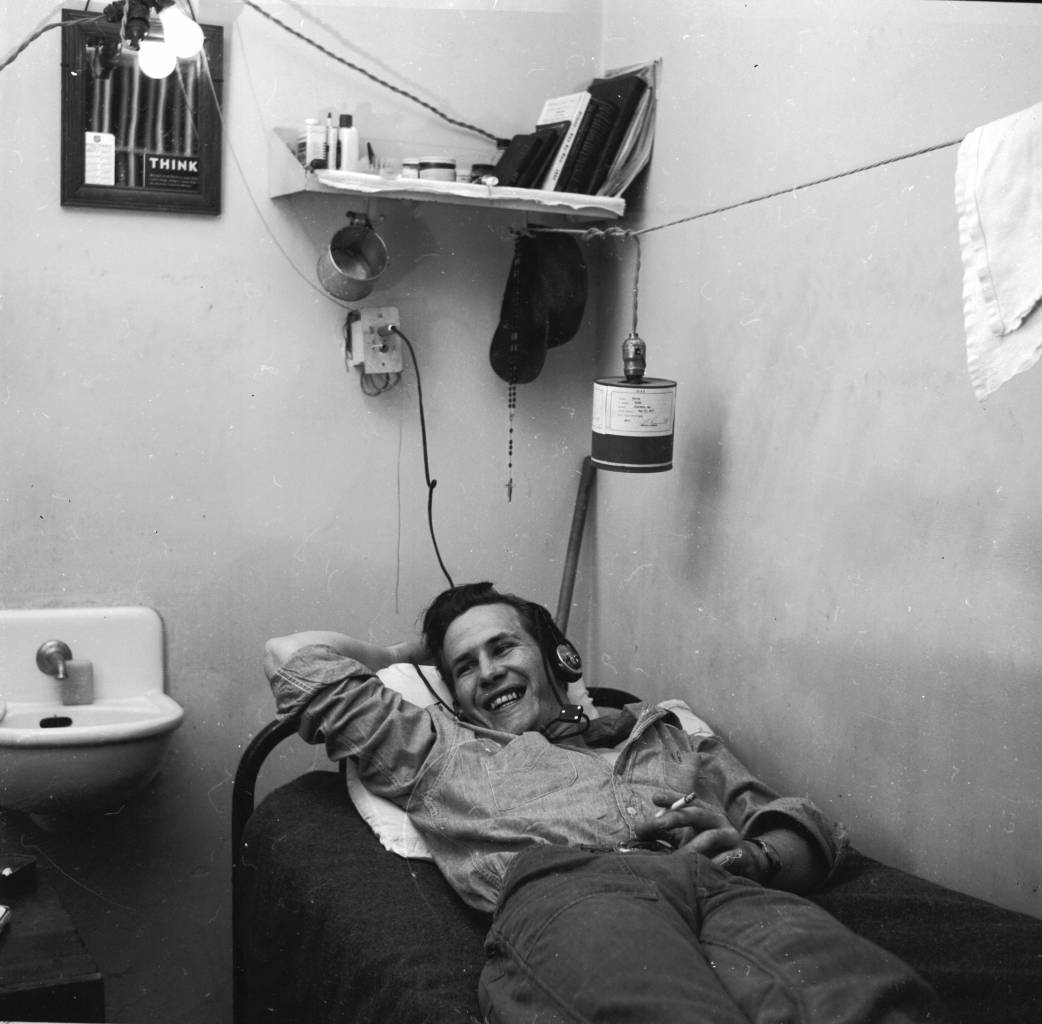
circa 1956: Prisoner Paul Harris listens to the radio in his cell at Iowa State Prison. (Photo by Three Lions/Getty Images)
Eventually, the decision arrived. The State Governor commuted the death sentence to life imprisonment. Warren Jack Nutter was not executed.
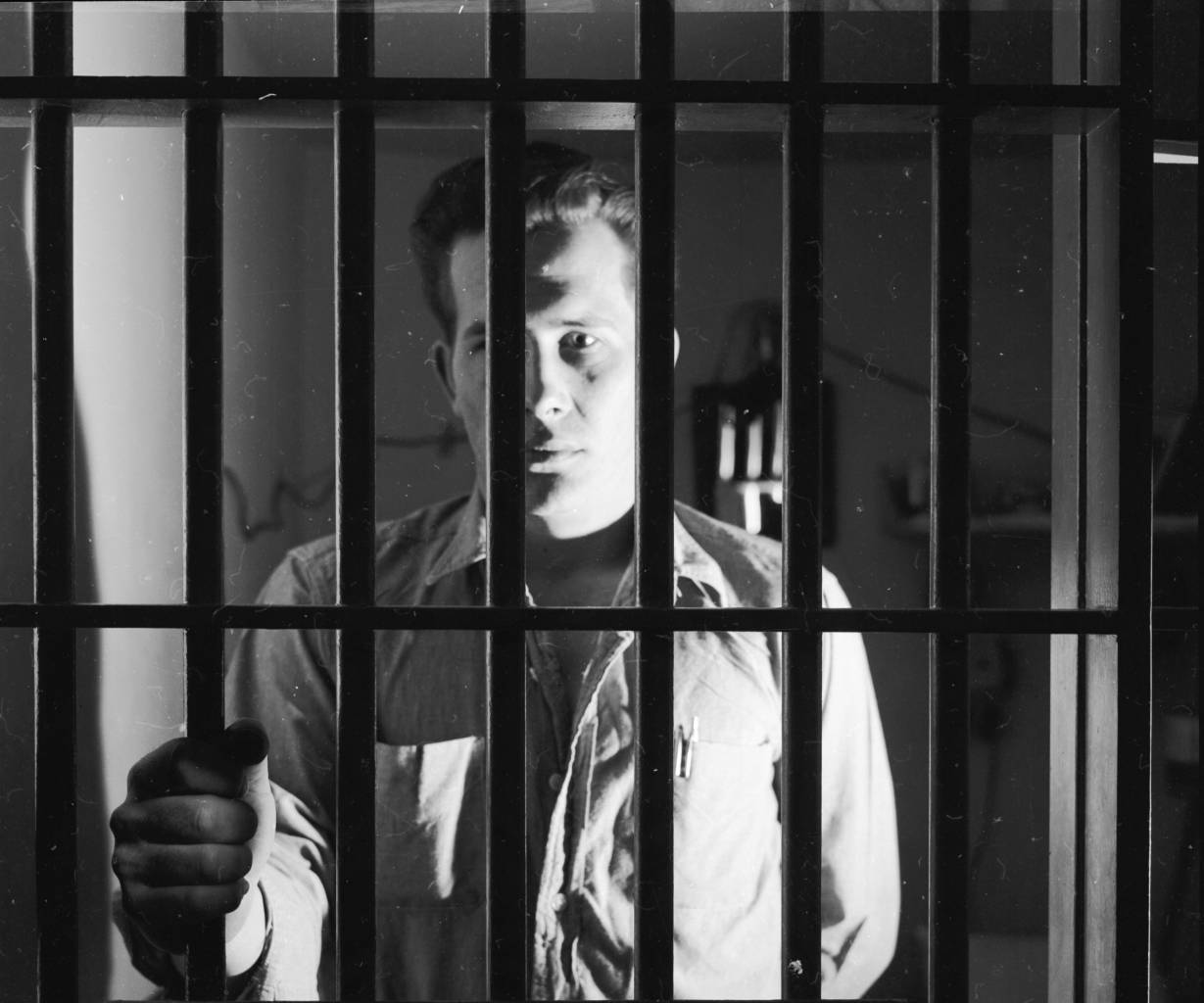
circa 1956: Prisoner Paul Harris in his cell at Iowa State Prison. (Photo by Three Lions/Getty Images)
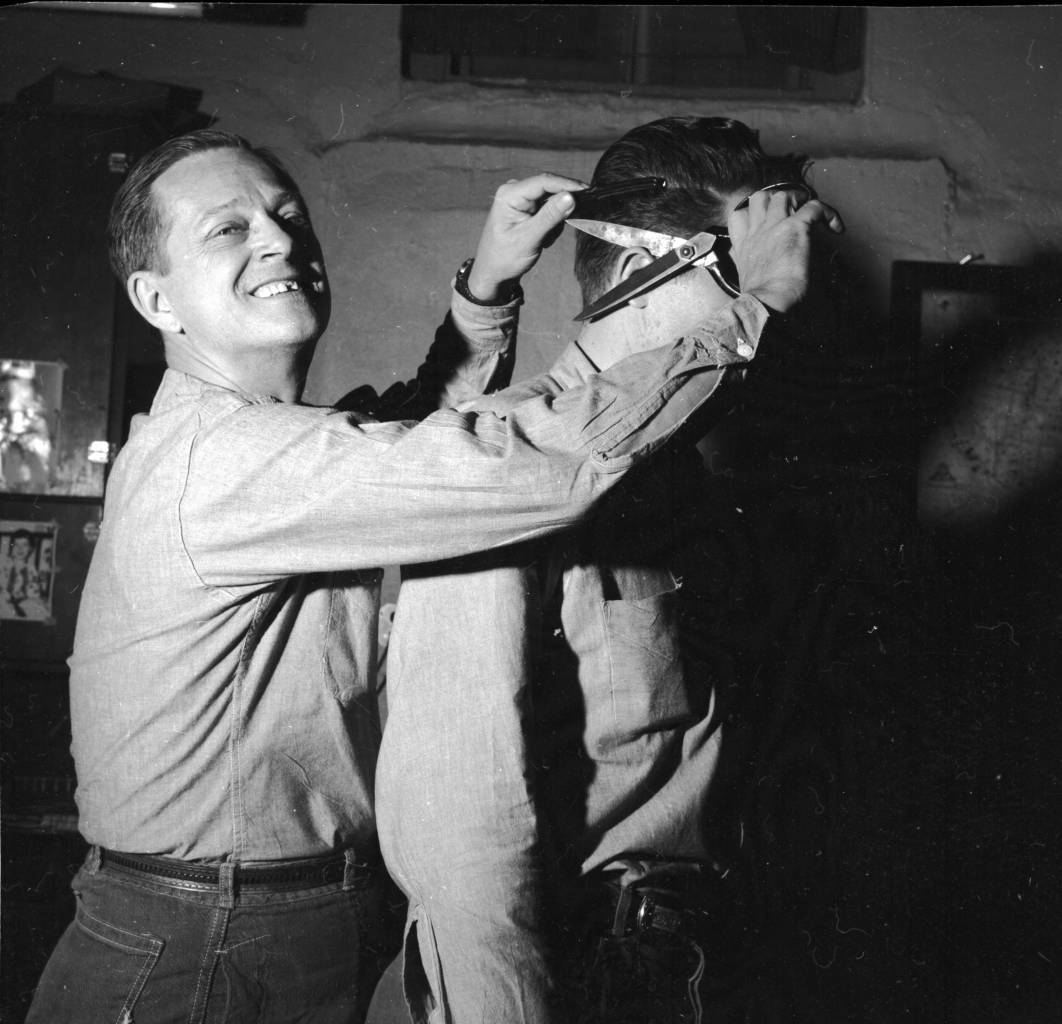
circa 1956: Prisoner Paul Harris cell at lights out in Iowa State Prison. (Photo by Three Lions/Getty Images)
The last prisoner executed at Ford Madison was Victor Feguer, who went to the gallows in 1963. Feguer killed Dr. Edward Bartels, a stranger whose named he’d picked from the phone book. The condemned man’s last meal was an olive with the pit still in it. He told prison officials he hoped an olive tree would sprout from his body as a sign of peace. “I sure hope I’m the last one to go,” Feguer told prison chaplain Rev. Bernard Brugman on March 15, 1963.

circa 1955: Prisoners at the Iowa State Penitentiary in Fort Madison, with Christmas decorations in their cell. (Photo by Vandermyn/Three Lions/Getty Images)
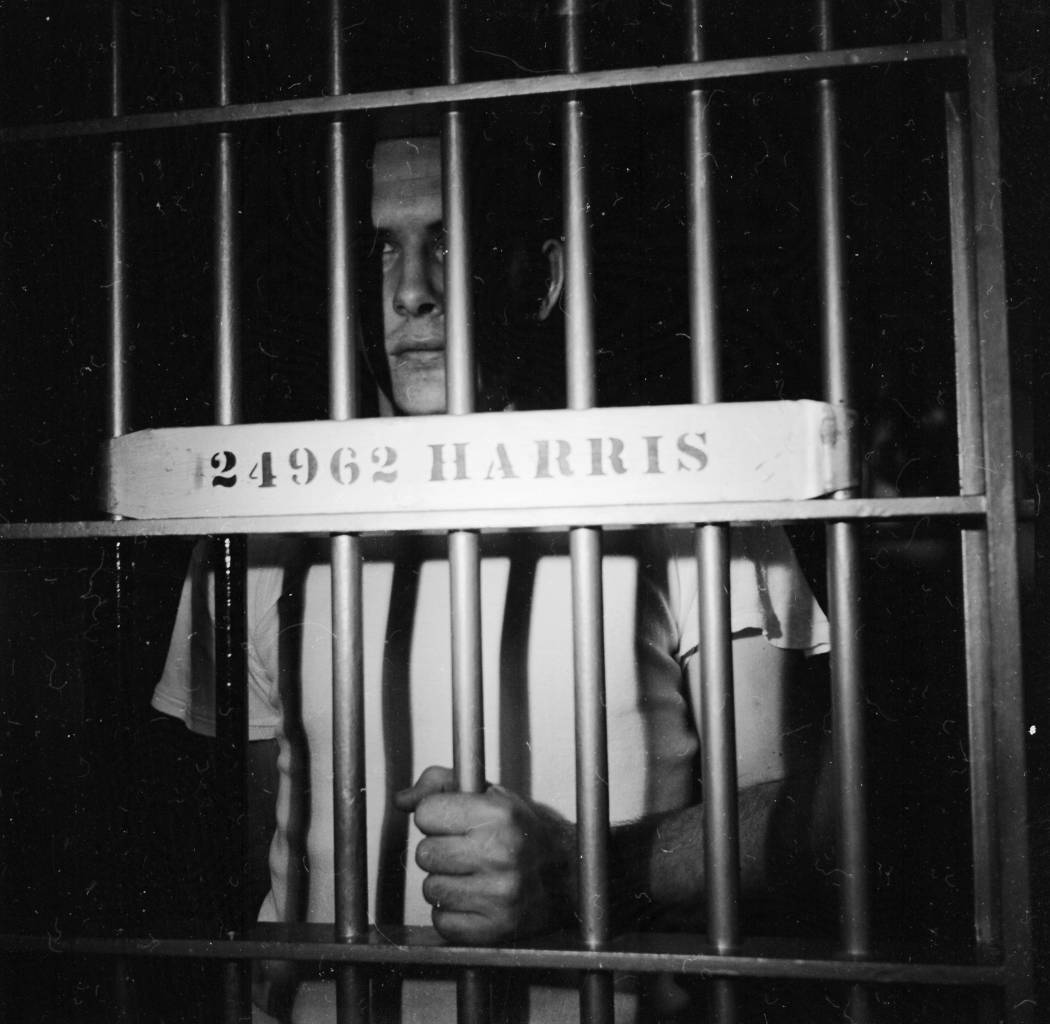
circa 1956: Prisoner Paul Harris cell at lights out in Iowa State Prison. (Photo by Three Lions/Getty Images)
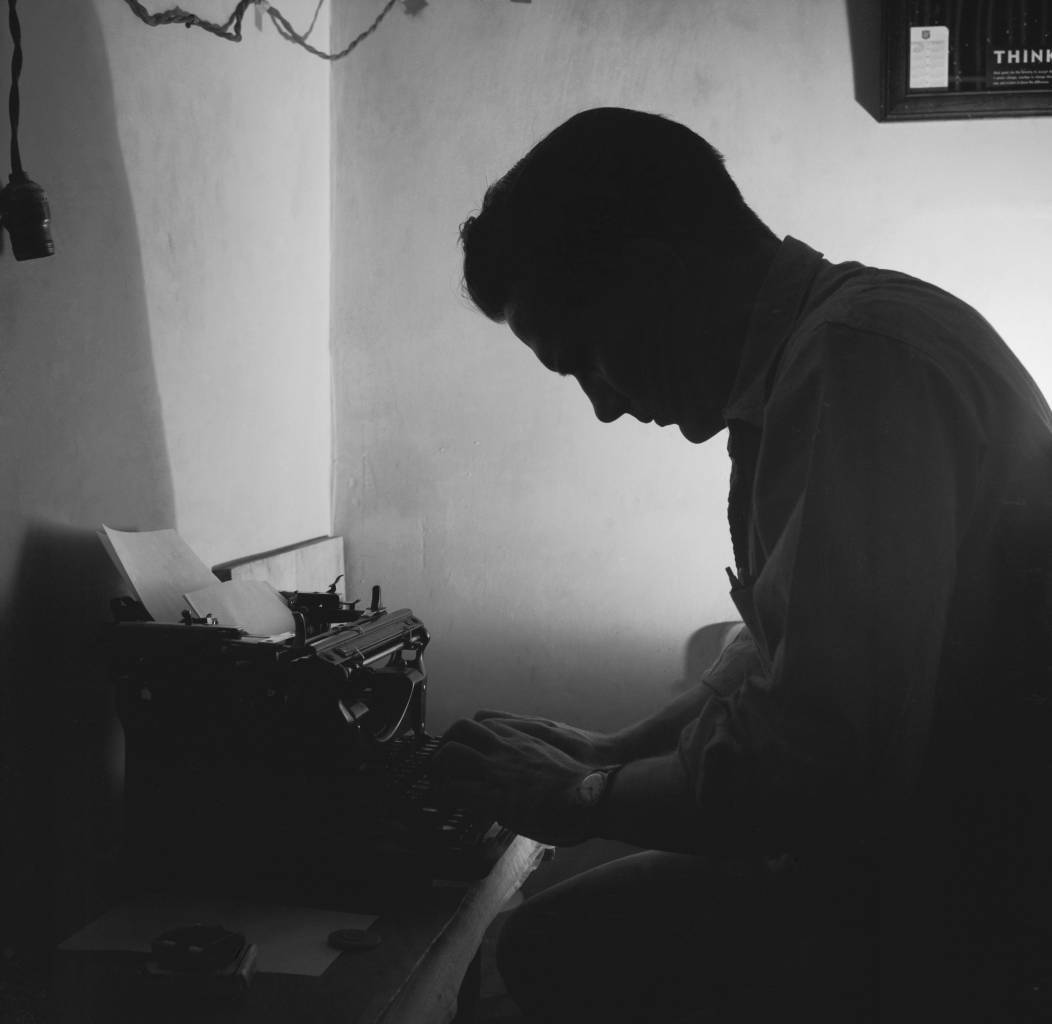
circa 1956: Prisoner Paul Harris types a letter in his cell at Iowa State Prison. (Photo by Three Lions/Getty Images)
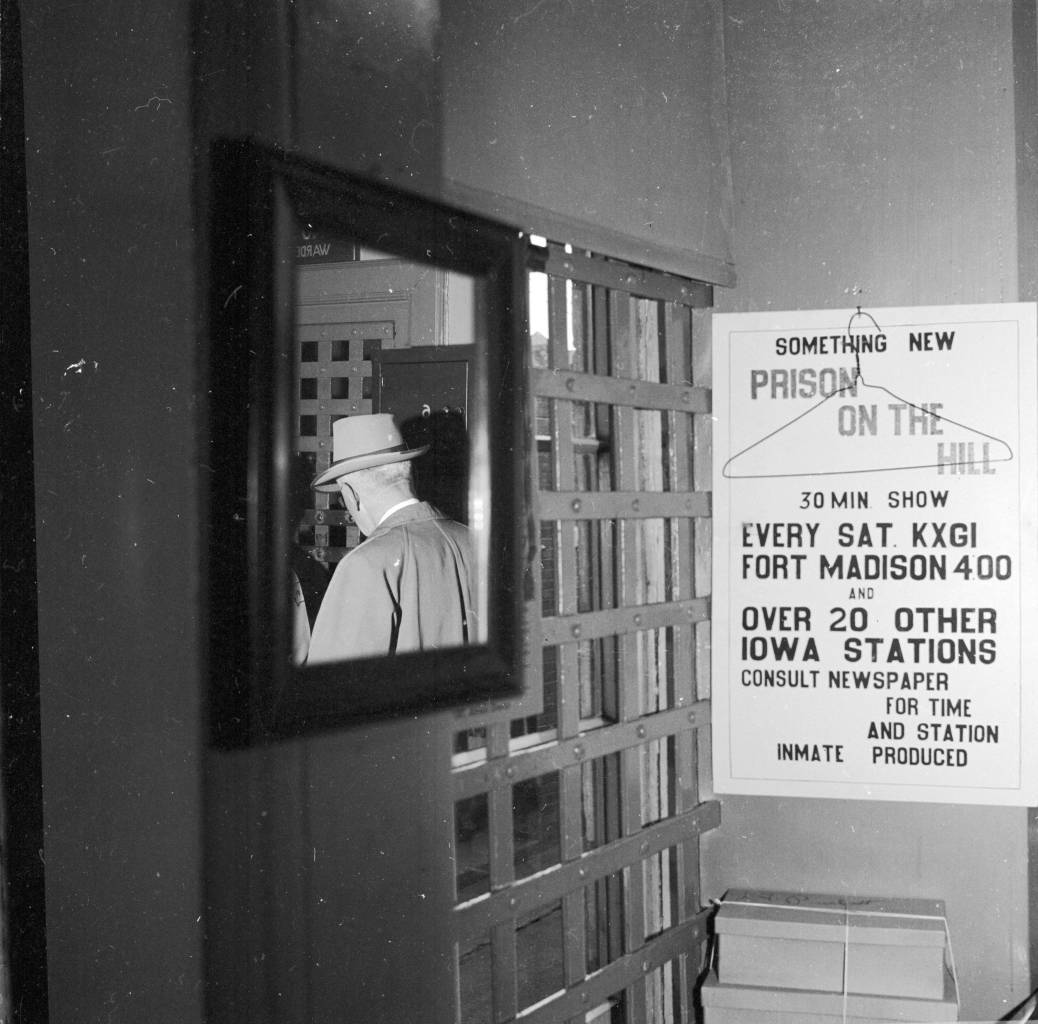
circa 1956: Robert L Feightner, Chief Surgeon at Iowa State Prison leaving the prison after a days work. (Photo by Evans/Three Lions/Getty Images)
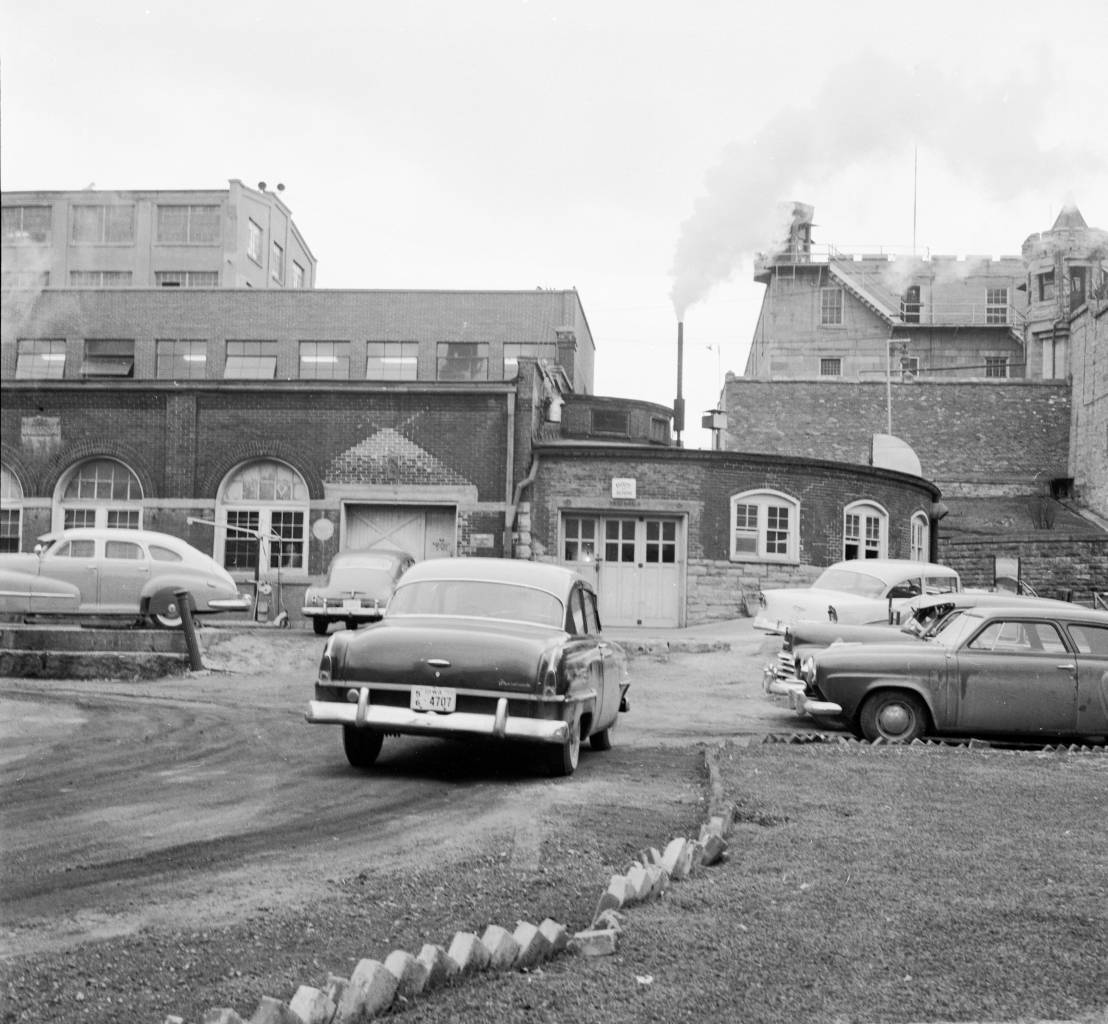
circa 1958: Cars waiting to be repaired at Fort Madison, Iowa State prison, in the prison’s automobile repair lot. (Photo by Three Lions/Getty Images)
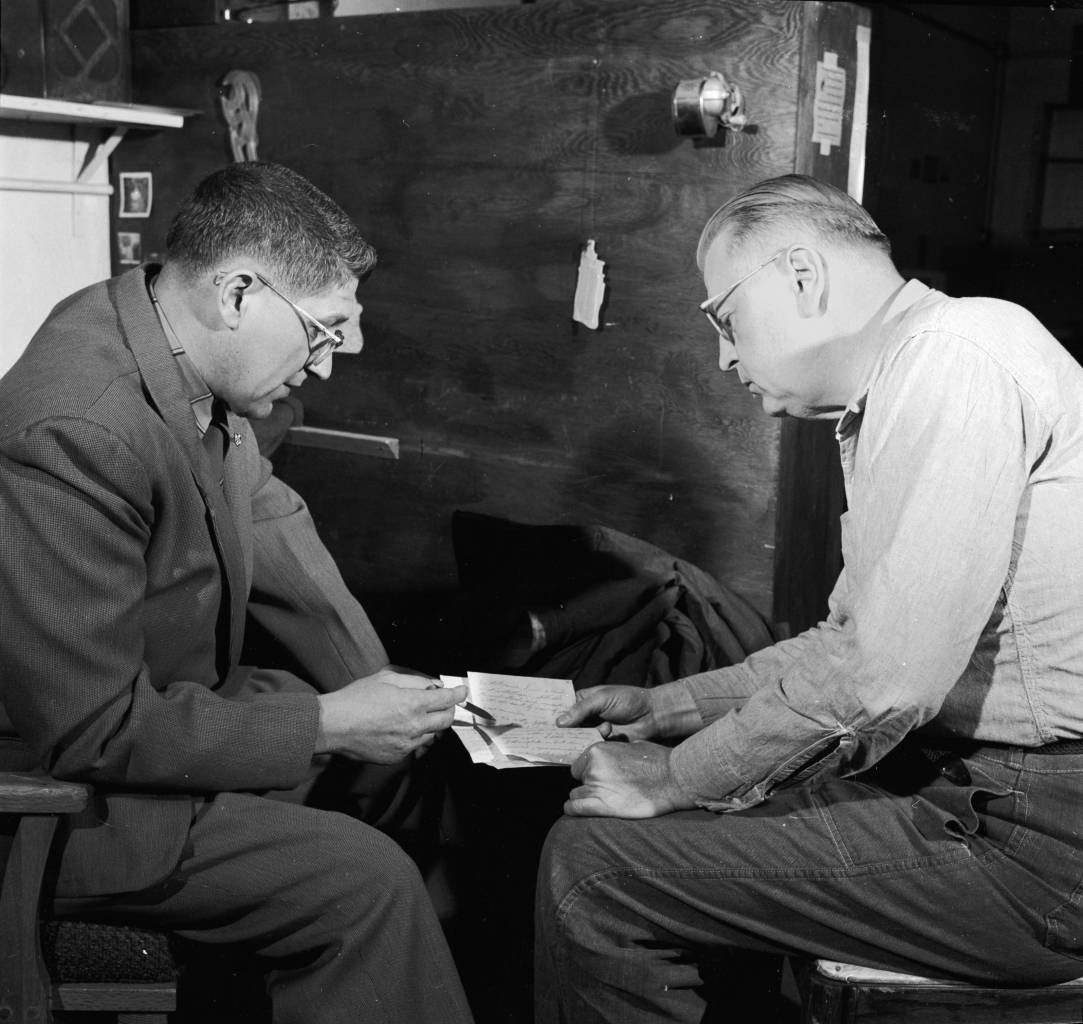
circa 1958: Inmates at Fort Madison, Iowa State prison, learning motor mechanics at a Ford sponsored school on the prison premises. (Photo by Three Lions/Getty Images)

circa 1958: Inmates at Fort Madison, Iowa State prison, learning motor mechanics at a Ford sponsored school on the prison premises. (Photo by Three Lions/Getty Images)
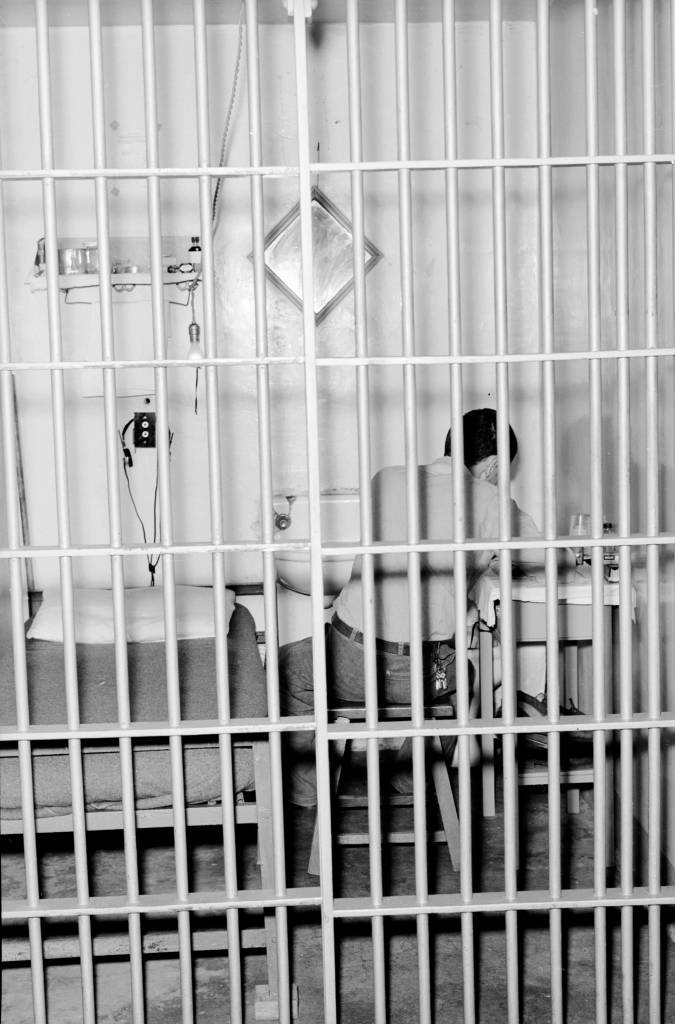
circa 1958: Prisoner Robert Jelinek in his cell at Fort Madison, Iowa State prison. (Photo by Three Lions/Getty Images)

circa 1958: William Abel, mail censor at Iowa’s State Prison, Fort Madison, reading a letter before it can be passed on to the inmate addressee. Bill estimates he has read 500,000 letters since starting his job four years ago. (Photo by Three Lions/Getty Images)
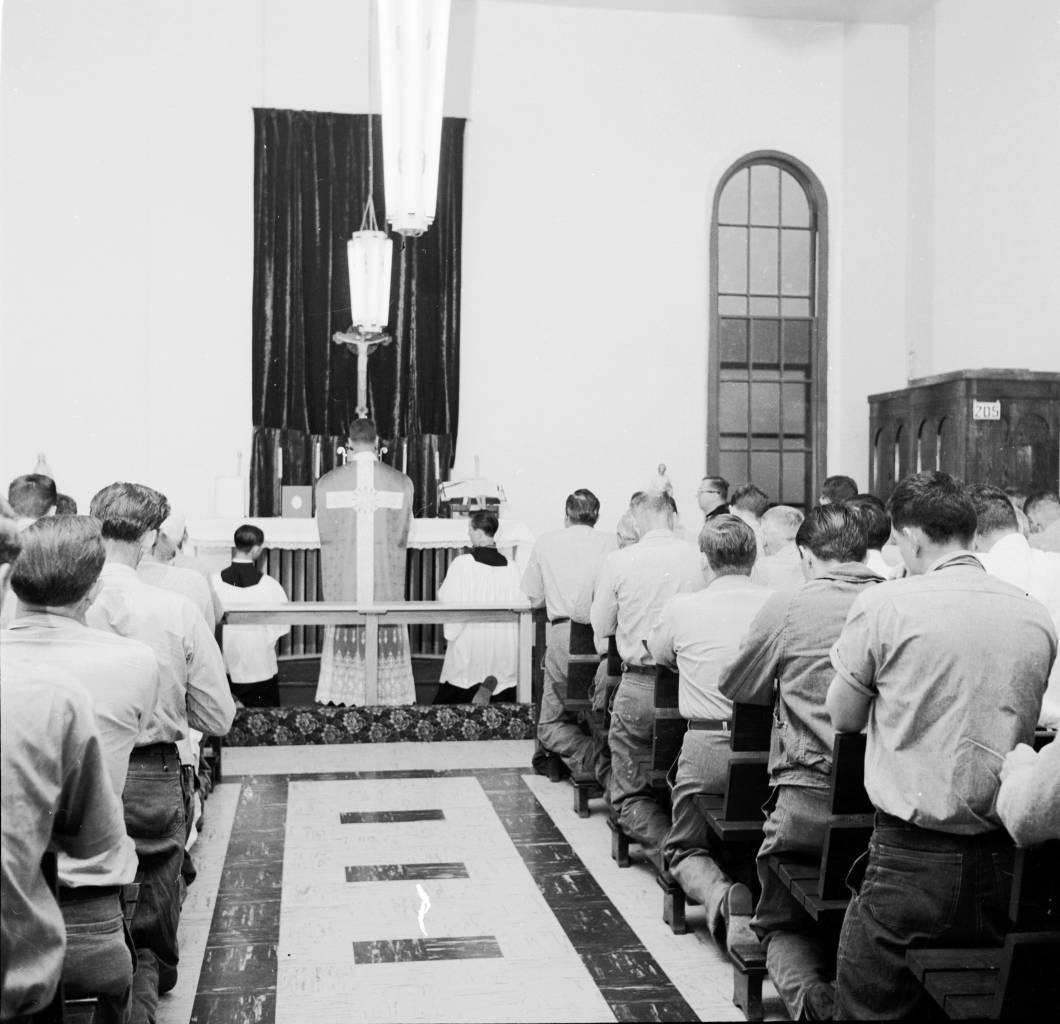
circa 1958: Prisoners in Fort Madison, Iowa State prison, attending Catholic Mass. (Photo by Nocella/Three Lions/Getty Images)
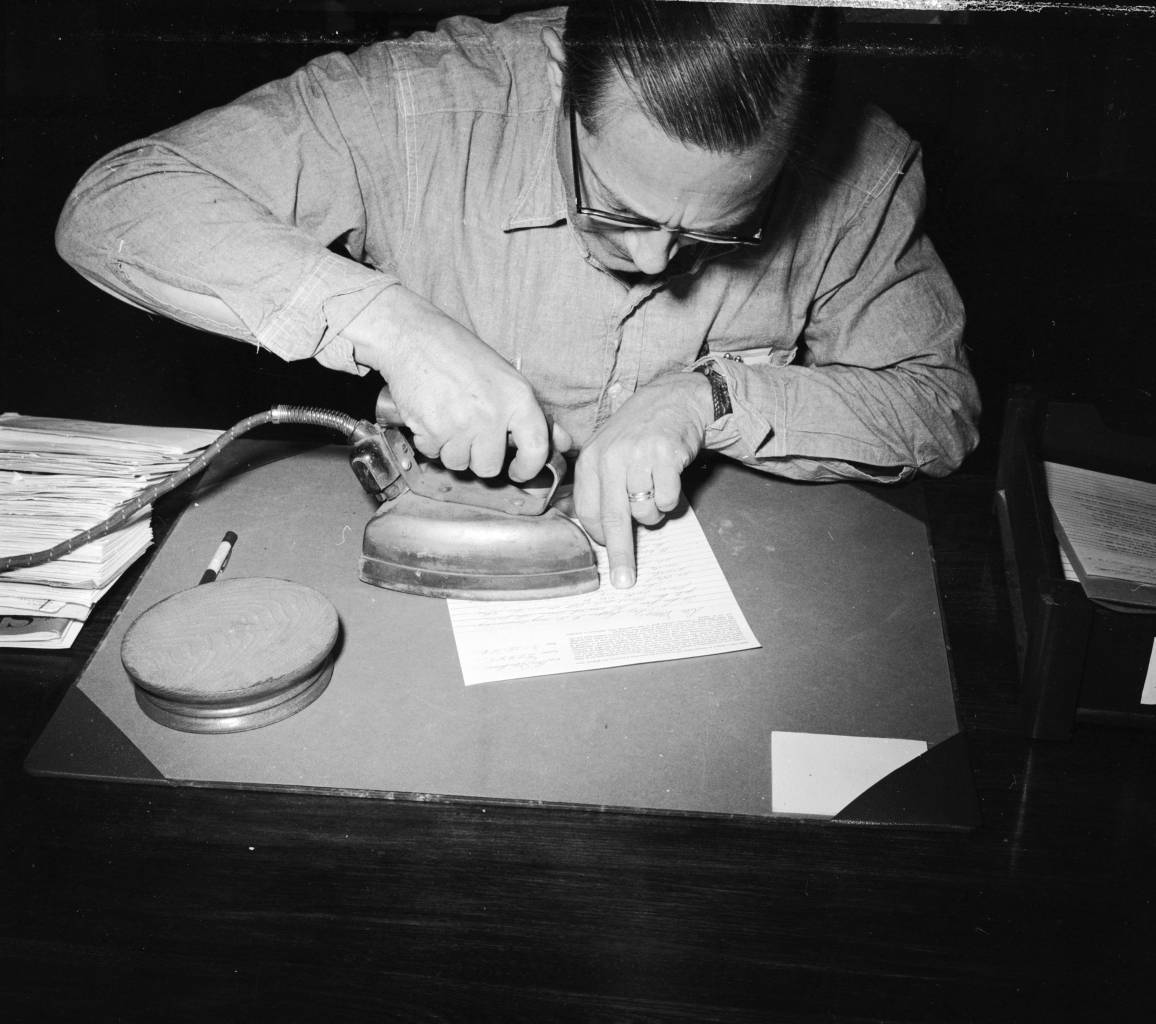
circa 1958: William Abel, mail censor at Iowa’s State Prison, Fort Madison, using a hot iron to bring out a secret message written in lemon juice on a letter. A liquor smuggling plot was consequently foiled. Bill estimates he has read 500,000 letters since starting his job four years ago. (Photo by Three Lions/Getty Images)
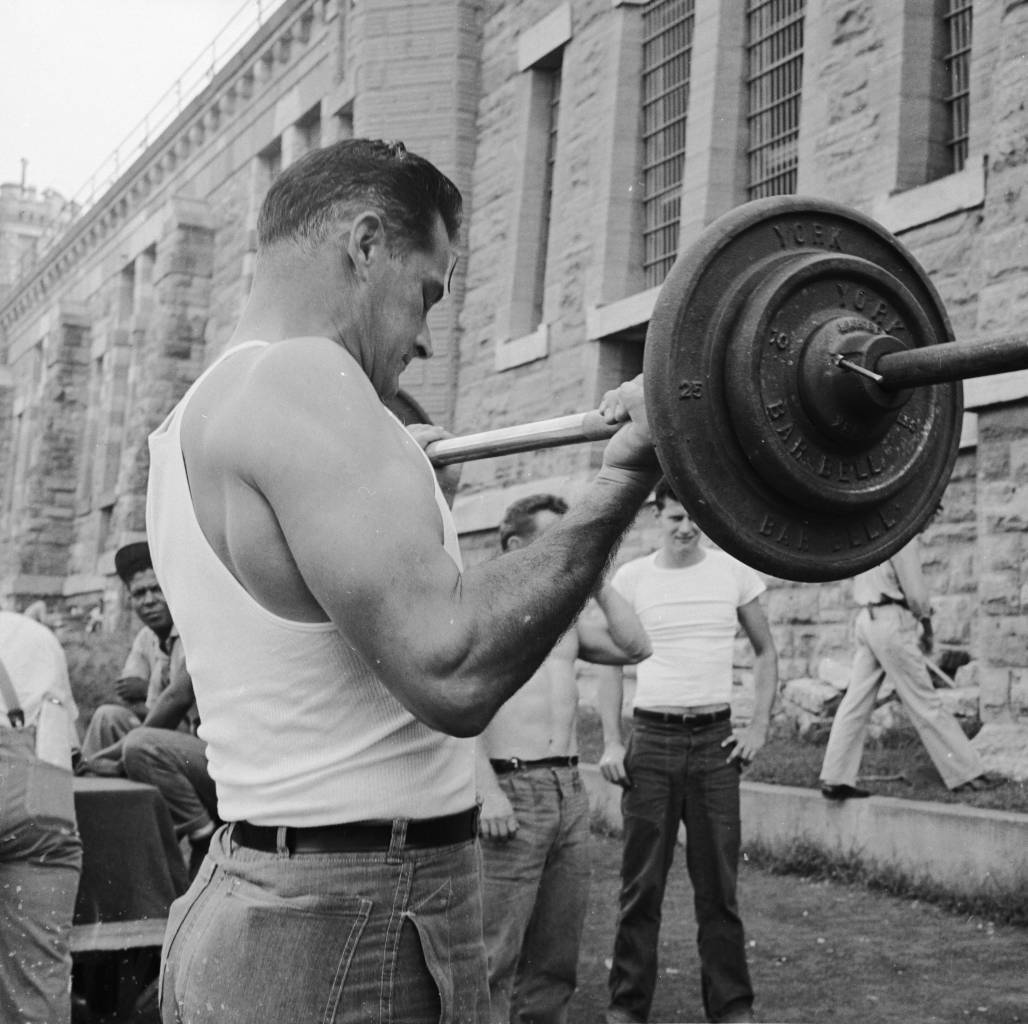
circa 1956: A prisoner weightlifting at Iowa State Prison. (Photo by Neese/Three Lions/Getty Images)
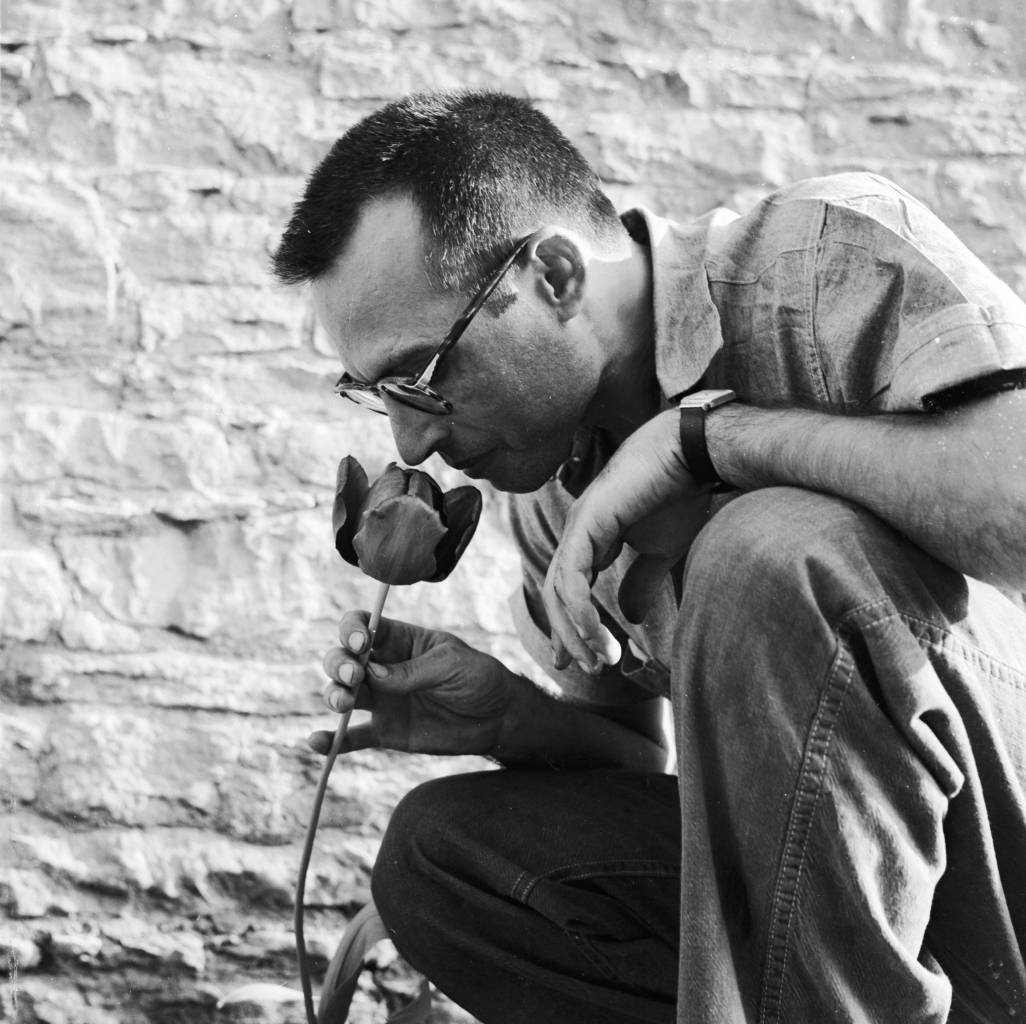
circa 1956: A prisoner at Iowa State Prison smells a flower. (Photo by Neese/Three Lions/Getty Images)
Would you like to support Flashbak?
Please consider making a donation to our site. We don't want to rely on ads to bring you the best of visual culture. You can also support us by signing up to our Mailing List. And you can also follow us on Facebook, Instagram and Twitter. For great art and culture delivered to your door, visit our shop.


